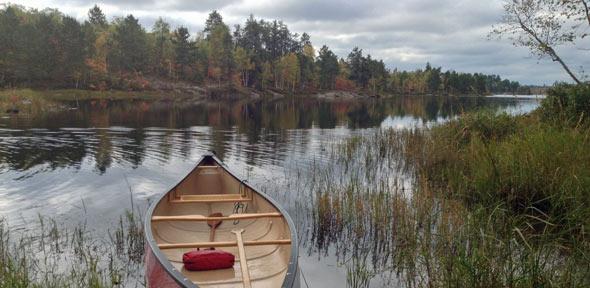
A new study of chemical reactions that occur when organic matter decomposes in freshwater lakes has revealed that the debris from trees suppresses production of methane – while debris from plants found in reed beds actually promotes this harmful greenhouse gas.
As vegetation in and around bodies of water continues to change, with forest cover being lost while global warming causes wetland plants to thrive, the many lakes of the northern hemisphere – already a major source of methane – could almost double their emissions in the next fifty years.
The researchers say that the findings suggest the discovery of yet another “feedback loop” in which environmental disruption and climate change trigger the release of ever more greenhouse gas that further warms the planet, similar to the concerns over the methane released by fast-melting arctic permafrost.
“Methane is a greenhouse gas at least twenty-five times more potent than carbon dioxide. Freshwater ecosystems already contribute as much as 16% of the Earth’s natural methane emissions, compared to just 1% from all the world’s oceans,” said study senior author Dr Andrew Tanentzap, from the University of Cambridge’s Department of Plant Sciences.
“We believe we have discovered a new mechanism that has the potential to cause increasingly more greenhouse gases to be produced by freshwater lakes. The warming climates that promote the growth of aquatic plants have the potential to trigger a damaging feedback loop in natural ecosystems.”
The researchers point out that the current methane emissions of freshwater ecosystems alone offsets around a quarter of all the carbon soaked up by land plants and soil: the natural ‘carbon sink’ that drains and stores CO2 from the atmosphere.
Up to 77% of the methane emissions from an individual lake are the result of the organic matter shed primarily by plants that grow in or near the water. This matter gets buried in the sediment found toward the edge of lakes, where it is consumed by communities of microbes. Methane gets generated as a byproduct, which then bubbles up to the surface.
Working with colleagues from Canada and Germany, Tanentzap’s group found that the levels of methane produced in lakes varies enormously depending on the type of plants contributing their organic matter to the lake sediment. The study, funded by the UK’s Natural Environment Research Council, is published today in the journal Nature Communications.
To test how organic matter affects methane emissions, the scientists took lake sediment and added three common types of plant debris: deciduous trees that shed leaves annually, evergreen pine-shedding coniferous trees, and cattails (often known in the UK as ‘bulrushes’) – a common aquatic plant that grows in the shallows of freshwater lakes.
These sediments were incubated in the lab for 150 days, during which time the scientists siphoned off and measured the methane produced. They found that the bulrush sediment produced over 400 times the amount of methane as the coniferous sediment, and almost 2,800 times the methane than that of the deciduous.
Unlike the cattail debris, the chemical makeup of the organic matter from trees appears to trap large quantities of carbon within the lake sediment – carbon that would otherwise combine with hydrogen and get released as methane into the atmosphere.
To confirm their findings, the researchers also “spiked” the three samples with the microbes that produce methane to gauge the chemical reaction. While the forest-derived sediment remained unchanged, the sample containing the bulrush organic matter doubled its methane production.
“The organic matter that runs into lakes from the forest trees acts as a latch that suppresses the production of methane within lake sediment. These forests have long surrounded the millions of lakes in the northern hemisphere, but are now under threat,” said Dr Erik Emilson, first author of the study, who has since left Cambridge to work at Natural Resources Canada.
“At the same time, changing climates are providing favourable conditions for the growth and spread of aquatic plants such as cattails, and the organic matter from these plants promotes the release of even more methane from the freshwater ecosystems of the global north.”
Using species distribution models for the Boreal Shield, an area that covers central and eastern Canada and “houses more forests and lakes than just about anywhere on Earth”, the researchers calculated that the number of lakes colonised by just the common cattail (Typha latifolia) could double in the next fifty years – causing current levels of lake-produced methane to increase by at least 73% in this part of the world alone.
Added Tanentzap: “Accurately predicting methane emissions is vital to the scientific calculations used to try and understand the pace of climate change and the effects of a warmer world. We still have limited understanding of the fluctuations in methane production from plants and freshwater lakes.”
Latest research finds plant debris in lake sediment affects methane emissions. The flourishing reed beds created by changing climates could threaten to double the already significant methane production of the world’s northern lakes.

The text in this work is licensed under a Creative Commons Attribution 4.0 International License. For image use please see separate credits above.